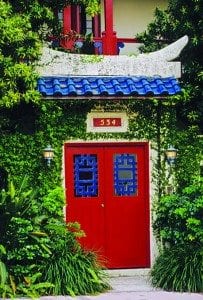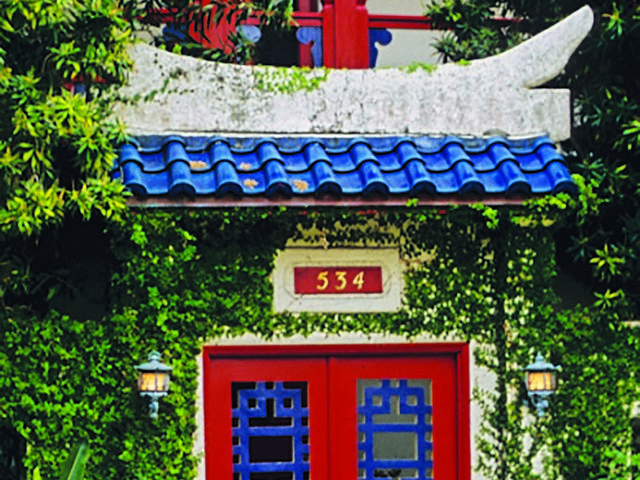
Toward the end of 1925, the real estate market in Florida had begun to cool, and George Merrick was looking for ways to renew interest in Coral Gables. He was approached by Myers Y. Cooper, a banker and former governor of Ohio, with a proposal to develop a series of villages. Though the City’s character would remain predominantly Mediterranean, the villages would provide some variety to the architecture and add some international flavor to Coral Gables.
The proposed $75 million project called for 14 villages. Unfortunately, only seven were built. By 1926, the American Building Corporation of Cincinnati had completed 40 homes as part of the Pioneer, French Country, French City, French Normandy, Chinese, Dutch South African, and Italian villages.
Pioneer Village, on Santa Maria Street, features homes with large upper and lower porches, in the aristocratic Georgia Colonial style. Their designs were copied and used for homes built in Cincinnati in the ‘30s, ‘40s and ‘50s. The French City and French Country villages are located along Hardee Road. The French City Village was built in 18th and 17th century French architectural style. The French Country Village homes feature the half-timbering, towers, and steeply-pitched, cross-gabled roofs of 18th century provincial architecture. The French Normandy Village, on LeJeune Road, was sold to the University of Miami in 1935. In 1941 it was home to five fraternities.
Further south on LeJeune Road is the Dutch South Africa Village, which features gabled and dormered roofs adapted from the farmhouses of the Boers. The Italian Village Historic District consists of 17 homes on Altara Avenue, Monserrate and Palmarito streets and San Esteban and San Lorenzo avenues. Completed in 1927, it includes Italian Country-style and Venetian-style homes.
Perhaps one of the most distinctive Villages, in terms of its departure from the surrounding architecture, is the Chinese Village, located on Riviera Drive. These homes were designed by Henry Killam Murphy, a Yale graduate who studied in the Orient and designed Yale-in- China, among other public buildings. The exteriors of these homes feature moon-doorways, intricate lattice patterns, upturned curving roof lines and other authentic features.
The villages planned but never built included Japanese, Italian Country, Neopolitan Baroque, Mexican Hacienda, African Bazaar, Persian Canal and Entrance to a home in the Chinese Village. Tangier villages.






